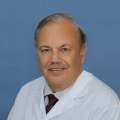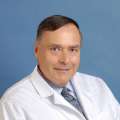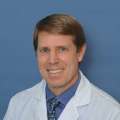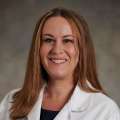
Can we make cancer a manageable illness?
With new targeted therapies improving survival rates and extending lives beyond expectations, many cancers are close to becoming manageable, chronic illnesses.
The breast cancer diagnosis that upended Kate Pickert’s life arrived in a trickle of worst-case scenarios. It seemed unlikely the occasional discharge from her nipple might be a sign of a serious problem. After all, Pickert was only 35 years old and had no family history of breast cancer. Yet, when she underwent a precautionary mammogram, the scan turned up a sprinkle of abnormal spots. Instead of the benign calcium deposits that her doctors expected, a biopsy identified them as HER2-positive breast cancer, an aggressive and fast-growing form of the disease. Then an MRI showed two invasive tumors growing in her breast, and Pickert’s transition to a cancer patient in a fight for her life was complete.

“Like anyone hearing they have breast cancer, I was totally reeling and terrified,” Pickert says. A journalist with a specialty in health care, she is the author of Radical: The Science, Culture, and History of Breast Cancer in America (Little, Brown Spark, 2019) and an associate professor of journalism at Loyola Marymount University in Los Angeles. “I had a 3-year-old daughter, and my husband and I had recently moved to L.A. I was worried about my family, and about the future.”
Pickert’s treatment at UCLA Health’s Jonsson Comprehensive Cancer Center involved the long-standing trio of surgery, chemotherapy and radiation. Each is a scorched-earth approach that makes no distinction between cancer cells and healthy tissues. But her diagnosis coincided with a revolution in cancer care — a surge in the availability of targeted therapies. Unlike the blunt-force tactics of chemo and radiation, targeted therapies are all about precision. They exploit vulnerabilities that are specific to certain types of cancer and neutralize the rogue cells at the molecular level.
The targeted treatment that Pickert received was Herceptin, a drug developed at UCLA and approved by the U.S. Food and Drug Administration 25 years ago. It strips cancer cells of one of their greatest advantages — the ability to grow and spread. The drug does this by targeting a specific molecular structure that is present on the surface of HER2-positve breast cancer cells. Treatment with Herceptin attacks this molecule and reduces the risk of recurrence in patients with early-stage disease, which has transformed survival rates of HER2-positive breast cancers.
“I was very lucky to have been diagnosed at a time when so many new targeted treatments are becoming available, and also to have the option to be treated at UCLA,” she says. “If you have access to clinical trials, if you have an oncologist who’s also a scientist and understands the latest drugs and drug combinations, if you can put those things together, then cancer becomes a completely different landscape.”
Now, as Pickert nears the 10-year anniversary of her diagnosis, cancer treatment is going through another seismic shift. As she pointed out in a well-received essay last year in The New York Times, new targeted therapies are being developed at a record pace. If a specific drug doesn’t work for a patient, or when a treatment ceases to be effective, newly developed alternatives are often already available.
Thanks to the speed of discovery, doctors can now move patients from one drug to another, each time extending their lives. This type of sequential therapy is improving survival rates, even for some people living with metastatic cancer. As a result, rather than a possibly fatal illness some types of cancer are on the cusp of becoming a manageable chronic disease.
“The evolution of cancer medicine is dramatic,” says Richard S. Finn, MD (RES ’00, FEL ’03), professor of medicine in the Division of Hematology/Oncology, medical director of the Clinical Research Unit and director of the Signal Transduction and Therapeutics Program at the UCLA Health Jonsson Comprehensive Cancer Center. His research focuses on the development of targeted therapeutics, and on working to make them easily available to a wide range of patients.
“Before the ’90s it was dismal, with very few drugs that often weren’t all that effective. Now, when a patient becomes resistant to a therapy, there are often follow-up therapies that will work,” he says. “The evolution of cancer care had been incremental for many decades. Now, it has just snowballed.”

The era of targeted cancer therapies began with Tamoxifen, a drug that was originally developed as a post-coital contraceptive. It was subsequently found to interfere with the ability of estrogen to stimulate tumor growth and was approved by the FDA for use in cancer treatment in 1978. Over the next two decades, gradual advances in immunology, and in cell and molecular biology, began to give researchers a window into cancer at a genetic level. This led to the development of drugs able to act on specific molecular targets. Then, in the mid-1990s, a series of breakthroughs in gene-sequencing technologies revolutionized cancer research.
“Being able to ask what makes a cancer cell behave the way that it does, and to cause the illness that it does, is what really opened the door for the opportunity of targeted therapy,” says Dennis J. Slamon, MD (FEL ’82), PhD, director of clinical and translational research at the UCLA Health Jonsson Comprehensive Cancer Center and chief of hematology/oncology at the David Geffen School of Medicine at UCLA. “On top of that, we’ve learned a lot about the molecular control of the immune system, and about harnessing immune-based therapies to treat cancer.”
“The evolution of cancer care had been incremental for many decades. Now, it has just snowballed.”
Dr. Richard S. Fin
Dr. Slamon is renowned for this groundbreaking research, which identified the role of the HER2 protein in driving cancer growth, and for the development of Herceptin, the resulting treatment. His tireless advocacy overcame the drug manufacturer’s initial reluctance to invest in such a new technology and led to the availability of a treatment that has helped save countless lives. Today, Dr. Slamon is working to make effective breast cancer treatments available to an even wider population. He is the lead investigator on the NATALEE trial, a large, international clinical trial now in progress in medical centers in 20 countries. It is evaluating a targeted treatment for hormone receptor-positive breast cancers. This type of cancer affects between 65% and 70% of all patients diagnosed with the disease.
The technological revolution that took place in of the 1990’s didn’t just expand the scope of cancer research, it also dramatically reduced research costs. In 2007, the bill to sequence someone’s genome ran about $1 million. The same tests today cost just $600.
These changes have opened up a new universe of cancer care, says John A. Glaspy, MD ’79 (RES ’82, FEL ’83), Simms/Mann Family Foundation Chair in Integrative Oncology and professor of medicine at the UCLA Health Jonsson Comprehensive Cancer Center. They have also increased the speed at which treatment evolves. “Things that used to take an entire career for somebody to work out can now be done by a graduate student before lunch,” he says. “That means the rate at which questions can be pursued, and new treatments explored, has increased dramatically.”
The most common types of targeted cancer therapies are monoclonal antibodies and small-molecule drugs. The former are lab-made proteins that trigger the immune system to disrupt the life cycle of cancer cells in a variety of ways. This includes hindering cell growth, blocking blood supply and making the cancer cells visible to the immune system. Small-molecule drugs are exactly as they sound: compounds that, due to their low molecular weight, can easily enter a cancer cell. Once inside, they act on other molecules in a way that causes the cancer cell to die.
A newer approach involves chemically linking a monoclonal antibody to a drug. This is known as a antibody-drug conjugate, or ADC. The monoclonal antibody binds to a specific protein or receptor on the cancer cell, thus delivering the linked drug. Another emerging area of research is bispecific antibodies. Their structure allows them to target two sites within a cancer and/or engage immune cells to attack it, thus expanding the therapeutic result.
Just like chemotherapy and radiation, targeted cancer therapies can cause side effects that range from mild to quite severe. These include headache, rash, mouth sores, neuropathy, hypertension and problems with blood clotting. Less common, but still a concern, is possible damage to the heart and other organs. That has made the order in which therapies are administered during a course of treatment as important as the drugs themselves.
“There are so many complexities involved when you’re planning a sequence of cancer therapy. It’s not just about the efficacy of a drug; it’s also about the toxicity and tailoring the order of the treatment to the individual patient,” says John M. Timmerman, MD, professor of medicine and a member of the UCLA Health Jonsson Comprehensive Cancer Center, who specializes in the blood cancer lymphoma. “Some patients may have a low blood count; some patients may already have pre-existing neuropathy. So, we have to look at everything as we decide on a course of treatment, like the side-effect profile of the drug and its efficacy.”
To help his patients understand all of the variables that are involved, Dr. Timmerman likens planning a course of treatment to playing a hand of poker. “I have a picture of somebody holding a good poker hand, jacks and kings and queens and aces, and the whole issue is which card to play when,” he says. “We don’t want to play our ace first if it’s a very strong treatment, because it might suppress the patient’s blood count or cause organ damage that could preclude being able to play some of our other very good cards later on.”
"There are so many complexities involved when you’re planning a sequence of cancer therapy. It’s not just about the efficacy of a drug; it’s also about the toxicity and tailoring the order of the treatment to the individual patient.”
Dr. John M. Timmerman

Acquired drug resistance, which occurs due to cancer cells’ constant mutation, is another challenge. But thanks to the swift pace of targeted drug development, patients are often able to switch to new and emerging drugs, which allows them to continue to fight the disease.
This type of sequential treatment has been a lifesaver for Phillip Veteto, who was diagnosed with advanced liver cancer at the end of 2019. He was 63 years old and running his decorative concrete business in Oxnard, California, when, during the month of October, he gradually become too ill to work. “I went to see my doctor in Ventura for some tests to find out what was going on, and just four days later she called me to say I had cancer. She recommended that I go see Dr. Finn at UCLA as soon as possible. That’s how I was able to get on these two studies,” Veteto said. “By the time I got there in December, Dr. Finn looked at my scans and told me he was going to have to throw a ‘Hail Mary’ pass because it wasn’t looking too good.”
That Hail Mary was an early-phase clinical trial in which an immunotherapy infusion was combined with an oral drug that disrupts the growth of cancer cells by inhibiting certain proteins. Over the course of the next year, Veteto responded well to the drug. However, at the start of 2021, tests showed that the very large tumor in his liver had once again begun to grow. Prepared for this possibility, Dr. Finn was able to enroll Veteto in a different clinical study. This one looked at the efficacy of a monoclonal antibody in blocking a different protein found in solid tumors. Other than a brief break to deal with a heart problem, Veteto has remained in the study since then.
“It’s remarkable — he has had advanced liver cancer and has been fully functional for the past four years,” Dr. Finn says of Veteto’s response to the targeted therapies. “And should he need it in the future, there are still other drugs to consider.”
Veteto, along with his wife, Shirley, is deeply grateful for Dr. Finn’s help in achieving this result. “If I had gone anywhere else to be treated, I know for sure that I wouldn’t be here right now,” Veteto says. “Dr. Finn told me I’ll probably have to stay on some kind of treatment for the rest of my life. But that’s the thing — I get to have a life.”
Being able to seek treatment at a comprehensive cancer center like UCLA has given patients like Pickert and Veteto a distinct advantage in their fight against cancer. It provides access to a wide range of doctors with expertise in leading-edge treatments, and also to early-phase clinical trials into novel drugs and therapies. But the reality is that for a large percentage of people diagnosed with cancer, this level of treatment isn’t an option.
One of the barriers to care is the steep cost of leading-edge cancer therapies. Among the most expensive is a treatment known as CAR T-cell therapy, which has a high success rate in treating lymphoma. It involves removing certain immune cells from the patient, genetically engineering them to attack their form of cancer, and reintroducing them to the patient’s body. A single infusion of the therapy costs in the neighborhood of $450,000.
But in order to worry about the cost of cancer treatments, patients need to have access to them in the first place. Because they are available only at large medical centers, people in rural areas are often excluded from the newest cancer therapies. And the obstacles to care don’t end there. In culturally diverse cities like Los Angeles, where the U.S. Census says more than 220 different languages are spoken, effective communication becomes a barrier.
Before a patient can join a clinical trial, they need to complete a consent form. These are detailed documents that explain the goals of the trial, what patients can expect as trial participants and any risks or discomforts that they might experience as a result. Consent forms are often complex, and also quite lengthy. They sometimes run 20-to-30 pages or more.

“When we’re running our clinical trials at UCLA, we’re regularly consenting into many different languages. There’s a lot of effort and planning that goes into being able to offer that extra piece,” says Amy L. Cummings, MD (FEL ’20), PhD, assistant professor in the Division of Hematology/Oncology, director of the UCLA Health Justice, Equity, Diversity and Inclusion Program and a member of the UCLA Health Jonsson Comprehensive Cancer Center. “We’re starting to think very carefully about how we can address the barriers to care in a systematic way to start making this level of care available for everybody.”
“When we’re running our clinical trials at UCLA, we’re regularly consenting into many different languages. There’s a lot of effort and planning that goes into being able to offer that extra piece.”
Dr. Amy L. Cummings
While important, language is just one component of expanding the availability of treatment. Another is letting people know that clinical trials are available. “We are working to embed our clinical trial experts in the wider community, and to expand the opportunity for more people to benefit from the research we are conducting,” Dr. Cummings says. “I think it’s most powerful when it comes from the traditional cultural meeting places that people trust, like churches and barbershops and nail salons. These are the kinds of places where, when you put educational materials into place, it’s easy to strike up a conversation.”
In addition to attracting a diverse population of patients, widening the reach of UCLA’s treatment centers is also a priority, Dr. Cummings says. “We’re also embedding our academic oncologists in a variety of different places, like community clinics, hospitals and safety-net facilities, such as Martin Luther King Jr. Community Hospital, Charles R. Drew University and Olive View-UCLA Medical Center. Cancer is a journey, and the treatment can’t be piecemeal. We are working to create a pathway, start to finish, that is available to as many people as possible.”
Veronique de Turenne is a freelance writer in Los Angeles and a frequent contributor to U Magazine.
To learn more about the UCLA Health Jonsson Comprehensive Cancer Center and find links to current clinical trials, go here.



